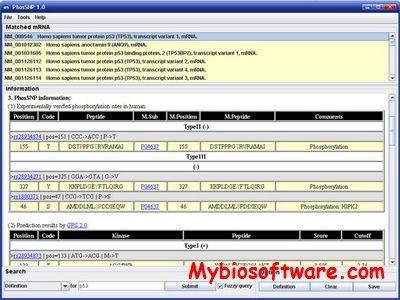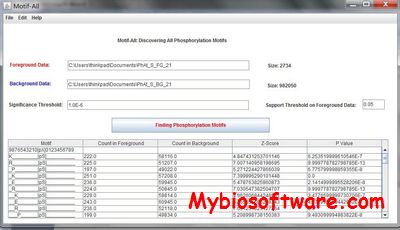MPTM 1.0
:: DESCRIPTION
MPTM is a web-based text mining tool that extracts and incorporates comprehensive knowledge about post-translational modification with their underlying substrate,enzyme,site,disease,and etc. This tool integrates available data not only from the published literature but also from the biological databases. Currently, users can browse the web server MPTM and see the results by entering the name of protein or other terms. Moreover, users can download data in the MPTMDB. In addition, using the “Interaction Search” to find potential substrate-enzyme associations.
::DEVELOPER
HI_Lab @ USTC
:: SCREENSHOTS
N/A
:: REQUIREMENTS
:: DOWNLOAD
 NO
NO
:: MORE INFORMATION
Citation:
Sun D, Wang M, Li A.
MPTM: A tool for mining protein post-translational modifications from literature.
J Bioinform Comput Biol. 2017 Oct;15(5):1740005. doi: 10.1142/S0219720017400054. Epub 2017 Sep 11. PMID: 28982288.
Literature mining of protein phosphorylation using dependency parse trees.
Wang M, Xia H, Sun D, Chen Z, Wang M, Li A.
Methods. 2014 Jun 1;67(3):386-93. doi: 10.1016/j.ymeth.2014.01.008.
 NO
NO
 NO
NO